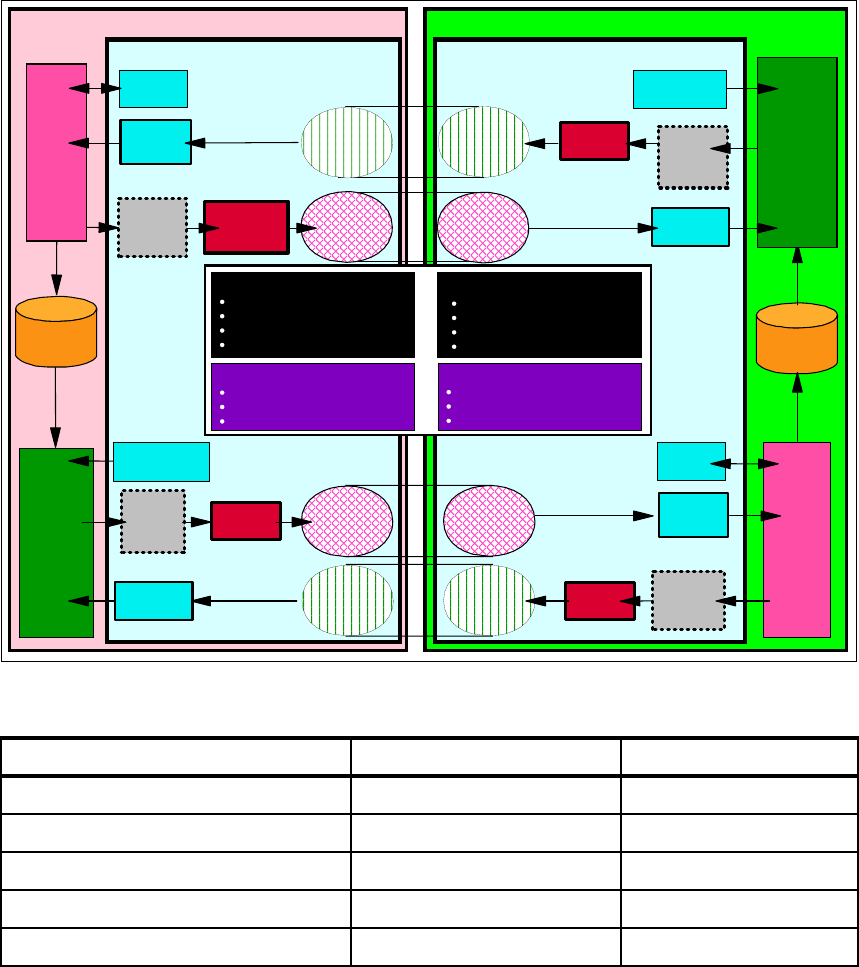
548 WebSphere Information Integrator Q Replication: Fast Track Implementation Scenarios
Towards this end, we have developed a template that identifies all the
information required to implement a peer-to-peer replication topology, and the
cross-relationships between the information elements to ensure a smooth
implementation.
Figure 6-3 provides a high-level overview of the various objects involved in
implementing a peer-to-peer replication topology involving two servers, and
serves as a reference for the host and DB2 system information template
(Table 6-1 on page 549), WebSphere MQ configuration information template
(Table 6-2 on page 550), Q replication configuration information template
(Table 6-3 on page 552), and Replication Alert Monitor configuration information
template (Table 6-4 on page 553). Each of the information elements for each
server is associated with a reference identification such as A.7a or B.7b, where A
represents one of the servers and B the other server. These reference IDs are
then cross-referenced in the template itself as well as the WebSphere II Q
replication configuration screens and scripts. For example, in Table 6-2 on
page 550 on WebSphere MQ information, for the XMITQ parameter (reference
ID A.18a for Server A) in the SendQ, we require reference ID A.13 (which is the
name of the TransmitQ), and that value is QM_WEST.
Once all the information identified in the template had been collected, we can
proceed with the actual implementation.
We have collected all the identified information for the Luna peer-to-peer
replication implemented and recorded them in the templates Table 6-1 on
Important: To ensure successful and error-free implementation, we strongly
encourage systematic and careful planning that involves identifying and
gathering all required information prior to commencing implementation.
Attention: In Figure 6-3, there appear to be two sets of transmission queues,
and sender and receiver channels, on each server. However, there is only one
set on each server, as can be deduced from the identical names. Figure 6-3
has the appearance of two sets so that the flow of data and messages
between the two servers is easily understood.
Note: The template shows certain parameter values that are required for Q
replication (such as parameter DEFPSIST
must be set to YES for the
TransmitQ [reference ID A.13] and does
not have a reference ID), while others
can be customized for a particular environment (such as reference ID A.13d
parameter MAXDEPTH
may be set to any value).




